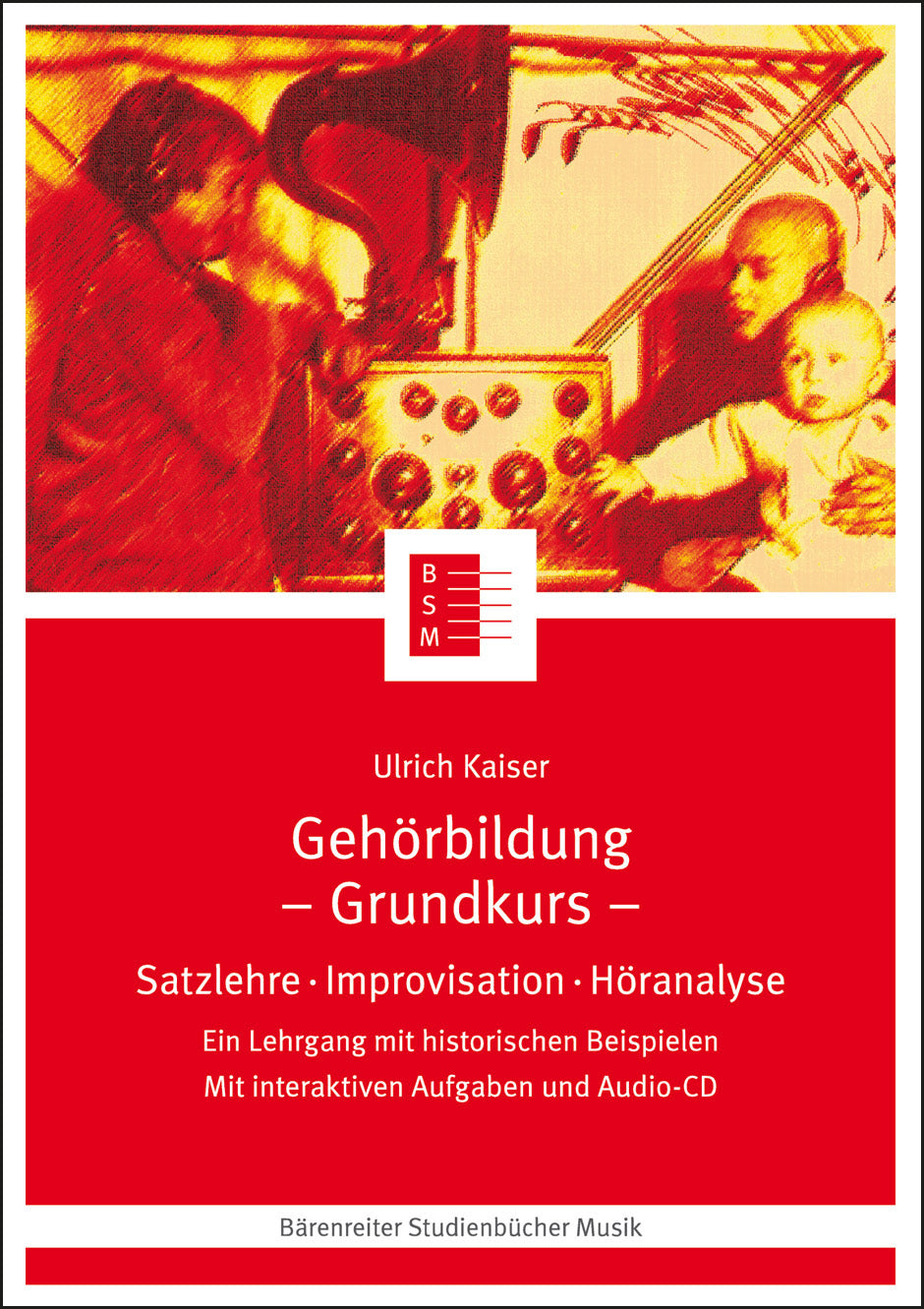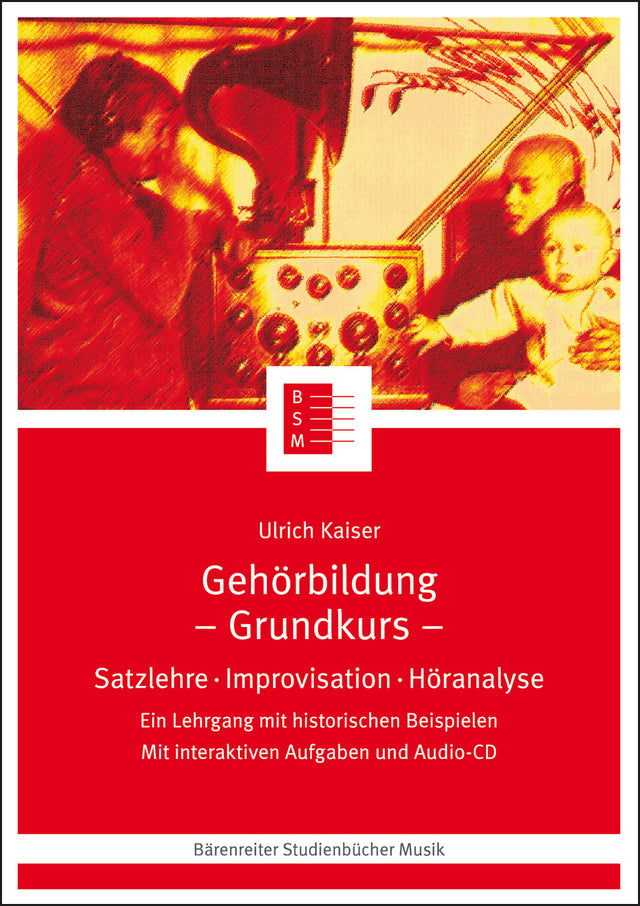Gehörbildung
Satzlehre - Improvisation - Höranalyse
Expected to ship in about a week.
- Author: Ulrich Kaiser
- Language: German
- ISMN:
- Size: 6.7 x 9.4 inches
- Pages: 241
Der Gehörbildung, wie sie heute an Musikhochschulen and Universitäten unterrichtet wird, spricht man oft zu Recht den Bezug zum konkreten Werk ab. Hier setzt die neue zweibändige Hörbildungsschule von Ulrich Kaiser an, die ausschließlich mit – mehr als 1400 – authentischen Beispielen aus der Musik des 15. bis 20. Jahrhunderts arbeitet.
Vom Tonsatz and der Notentextanalyse ausgehend, bietet der Lehrgang historisch-satztechnische and systematische Verständnishilfen, die es den Studierenden ermöglichen, musikalische Einzelphänomene zu immer größeren Einheiten zusammenzufassen. Die jedem Band beigegebene CD erleichtert die Erfassung and Sicherung der einzelnen methodischen Schritte. Ein Einsatz von Kaisers Schule empfiehlt sich lehrgangsbegleitend im Gehörbildungsunterricht, aber auch in den Fächern Satzlehre, Analyse, Improvisation and Formenlehre. Auch für das Selbststudium ist sie geeignet. in jedem Fall garantiert sie einen abwechslungsreichen and historisch differenzierten Zugang zu allen Aspekten der Gehörbildung.
Die digitalen Kapitel zu diesem Buch mit Übungsaufgaben finden Sie unter "Extras" oder indem Sie auf einen der folgenden Links klicken: Melodie Rhythmus Satzmodelle I Satzmodelle II
Publishers use a lot of words to describe what they sell, and we know it can be confusing. We've tried to be as clear as possible to make sure you get exactly what you are looking for. Below are descriptions of the terms that we use to describe the various formats that music often comes in.
Choral Score
A score for vocalists that only contains the vocal lines. The instrumental parts are not there for reference. Generally, cheaper than a vocal score and requires multiple copies for purchase.
Facsimile
Reproductions of the original hand-written scores from the composer.
Full Score
For ensemble music, this indicates that the edition contains all parts on a single system (there are not separate parts for each player). In larger ensembles, this is for the conductor.
Hardcover
Hardbound. Generally either linen-covered or half-leather.
Orchestral Parts
Similar to a wind set, this is a collection of parts. In the case of strings, the numbers listed are the number of copies included, though generally these are available individually (often with minimum quantities required).
Paperback
When publishers offer multiple bindings (e.g. hardcover) or study scores, this is the "standard" version. If you're planning to play the music, this is probably what you want.
Performance / Playing Score
A score of the music containing all parts on one system, intended for players to share. There are not separate parts for each player.
Set of Parts
For ensemble music, this indicates that there are separate individual parts for each player.
Solo Part with Piano Reduction
For solo pieces with orchestra, this is a version that contains a piano reduction of the orchestra parts. For piano pieces, two copies are typically needed for performance.
Study Score
A small (think choral size) copy of the complete score meant for studying, and not playing. They make great add-ons when learning concertos and small chamber works.
Vocal Score
A score prepared for vocalists that includes the piano/organ part or a reduction of the instrumental parts.
Wind Set
For orchestral music, this is a collection of wind and percussion parts. The specific quantities of each instrument are notated.
With Audio
In addition to the printed music, the edition contains recordings of the pieces. This may be an included CD, or access to files on the internet.
With / Without Fingering (Markings)
Some publishers prepare two copies - a pure Urtext edition that includes no fingering (or bowing) suggestions and a lightly edited version that includes a minimal number of editorial markings.



